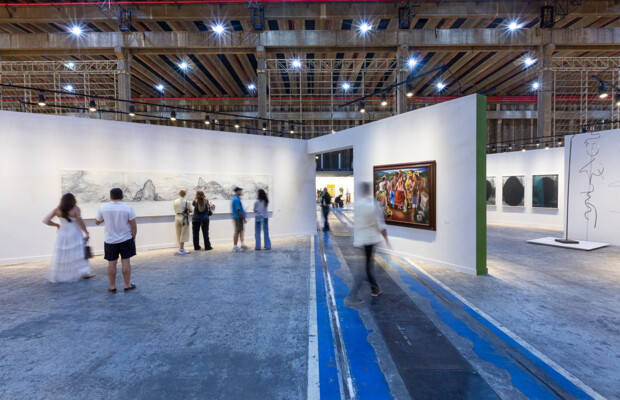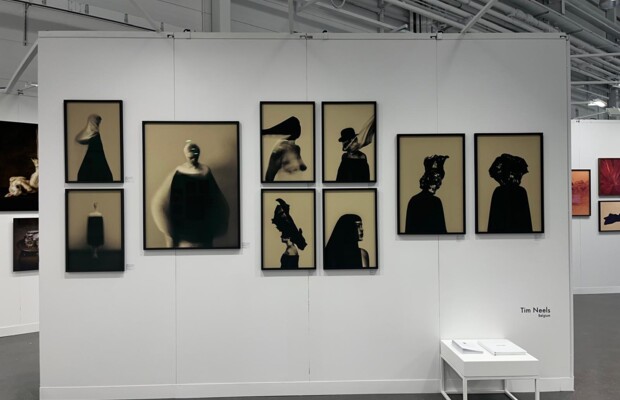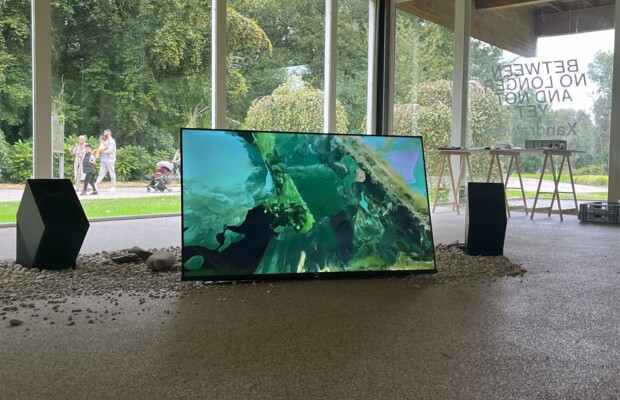10th edition of Big Art at Slotervaart Amsterdam
From September 27 to 29, Amsterdam hosted the tenth edition of Big Art Fair – a pop-up platform for XL artworks and large design objects. The concept of “XL artworks” hits you the moment you enter the venue – most of the displayed pieces are unexpectedly big. Luckily, the spacious halls can easily fit them – the fair occupies two floors of the famous brutalist building, the former Slotervaat Hospital, and the unique location perfectly fits the unconventional format.
The fair presents over 75 works from both well-known and emerging artists. The space allows for works of incredible magnitude: each of the featured artists was allocated an empty concrete block and given complete freedom to fill it as they saw fit. The result is a rich collection of works diverse in size, subject matter and format, ranging from more traditional paintings, sculptures and photographs to performances and multimedia installations.
Importance of space
An empty hospital building could not be further from a traditional gallery space. Unpainted walls become an interesting background that adds to the artwork. Another curious detail is the absence of any lamps or other artificial light sources except those specifically requested by the artists. Each block gets a lot of natural light from the big windows.
All artists had the opportunity to visit the location in advance and adjust their works accordingly. Some pieces were painted right on the walls, and many installations were created or shaped to work with their surroundings. One example is Melissa Moria’s “The Path You Choose to Follow” installation consisting of a complex sculpture and a mural that metaphorically depict how each choice we make determines the world we live in. The work is built on contrasts: elements of concrete and steel intertwine with green vines circling the flower that grows in the centre. The installation reflects on the tension between the urban environment and nature, offering the possibility of a harmonious coexistence. Working with the space is crucial for the piece. Melissa mentions that she specifically requested a door frame in one of the walls of her block, so viewers could see parts of the installation before walking in:
“Before the work is revealed fully, you can only see the back of the sculpture, made of wire and metal. And only when walking into the room do you see all the greenery”.

This work, while addressing the pressing issue of nature conservation in an urban environment, is ultimately about the choices we make: it’s up to us to save our world from becoming grey and artificial and find ways to create a balance between the city and the natural environment. Melissa admits that the work also reflects her personal choice as an artist. For a self-taught creator who mostly worked with paint creating the installation came with numerous challenges. It took a lot of courage to work with an unfamiliar format: “Although my background did not point me in this direction, I chose to follow my own path.” The result proves that taking risks is a productive way to create engaging art.
XL Artworks
The vast exhibition spaces allow for a great amount of creative freedom, providing an opportunity to create works that typically do not find their way into galleries and museums due to their size or concept. Those artists who usually work with smaller formats had a unique chance to experiment and bring their boldest ideas to life. In the stream of surrealistic sculptures and moving installations at Big Art, traditional canvas paintings feel like a haven. Among the most noticeable ones are “Babylon” by Johanna Arco, “Chronos and Kairos” by Bilal Chalal, “Metamorphosis” by Emma van Drongelen and “Fragments” by DH Mack.
The XL format offers a new perspective, enabling the realisation of ideas that are not suited to smaller sizes and providing new possibilities for the viewer’s experience.
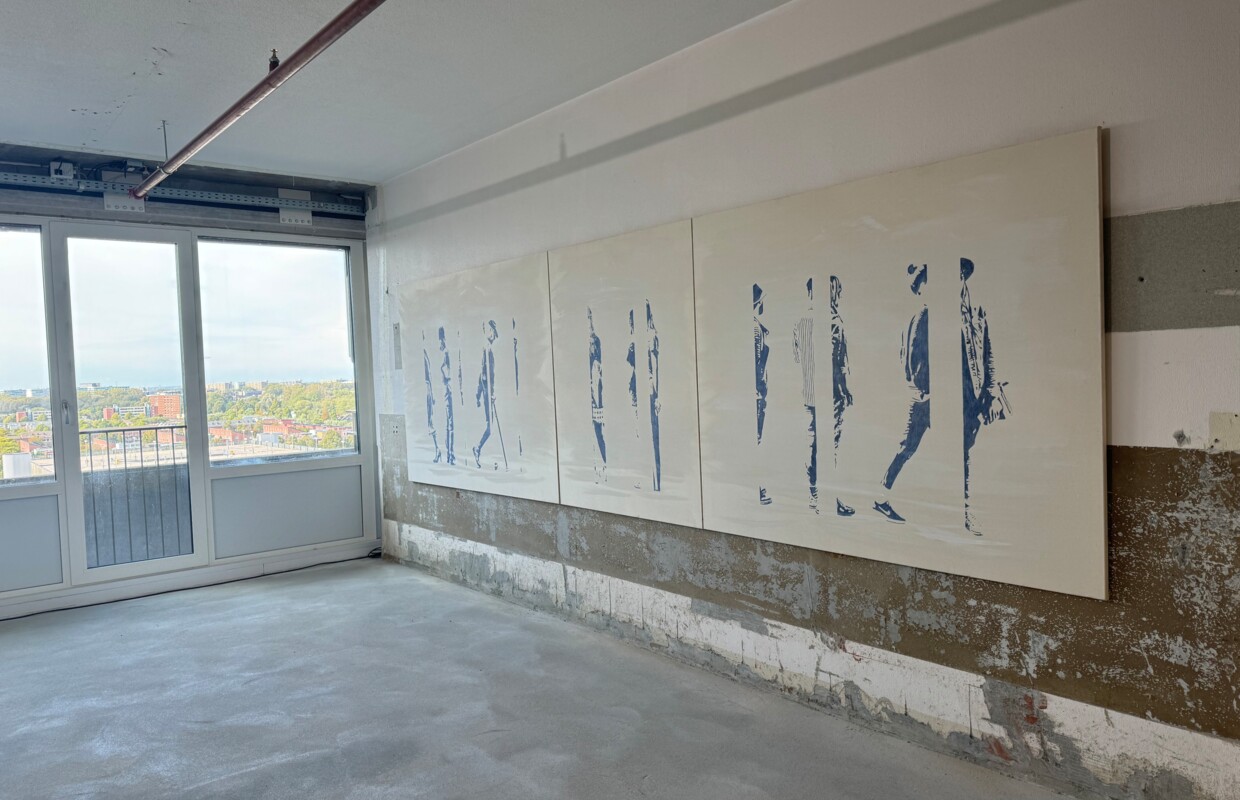
Working with a big format is unique because when people look at a large painting, they instantly become a part of it. The experience with smaller canvases is different, as you need to observe it closely to take in all the details,
The work “Fragments”, which she presents at her third Big Art Fair, depicts partial silhouettes of people moving on a plain background.
According to the artist, the silhouettes metaphorically represent people in modern society, showing and hiding parts of themselves. Our lives are constantly shaped by how we perceive others and how we are perceived by them. Society, therefore, is a shared reality that people construct as they interact with each other. It’s impossible to comprehend life without understanding human interaction, group dynamics, desires and expectations. The noticeable rhythm of the composition reflects the constant movement that characterises today’s society: people living in big cities are always in a rush, always surrounded by others, yet often struggling to build a genuine connection.
Another artistic technique that big format allows is layering the images to create a unique viewer’s experience. Since you don’t have to get close to the work right away – you can clearly see the painted objects from a distance – you first take the painting in as a whole, and then, as you move closer, more details and meanings emerge. When looking at “Metamorphosis” by Emma van Drongelen, the viewer experiences something opposite to what we typically feel with impressionist paintings. Here, the outlines of objects don’t dissolve into brushstrokes as you approach the canvas – instead, the silhouettes of moving animals, clearly visible at first, are gradually joined by more elements the longer you look. Soon, you notice the outlines of human bodies hidden in the figures, then a venous system lining the painting, and finally, sketches of internal organs and fragments of maps scattered across the canvas. This heterogeneity of the image supports the idea suggested in the title – in nature, one thing derives from another and the cycle of transformation is endless. Depicting this cyclical nature of life, the elements of the painting flow, move, constantly change and stay deeply interconnected.
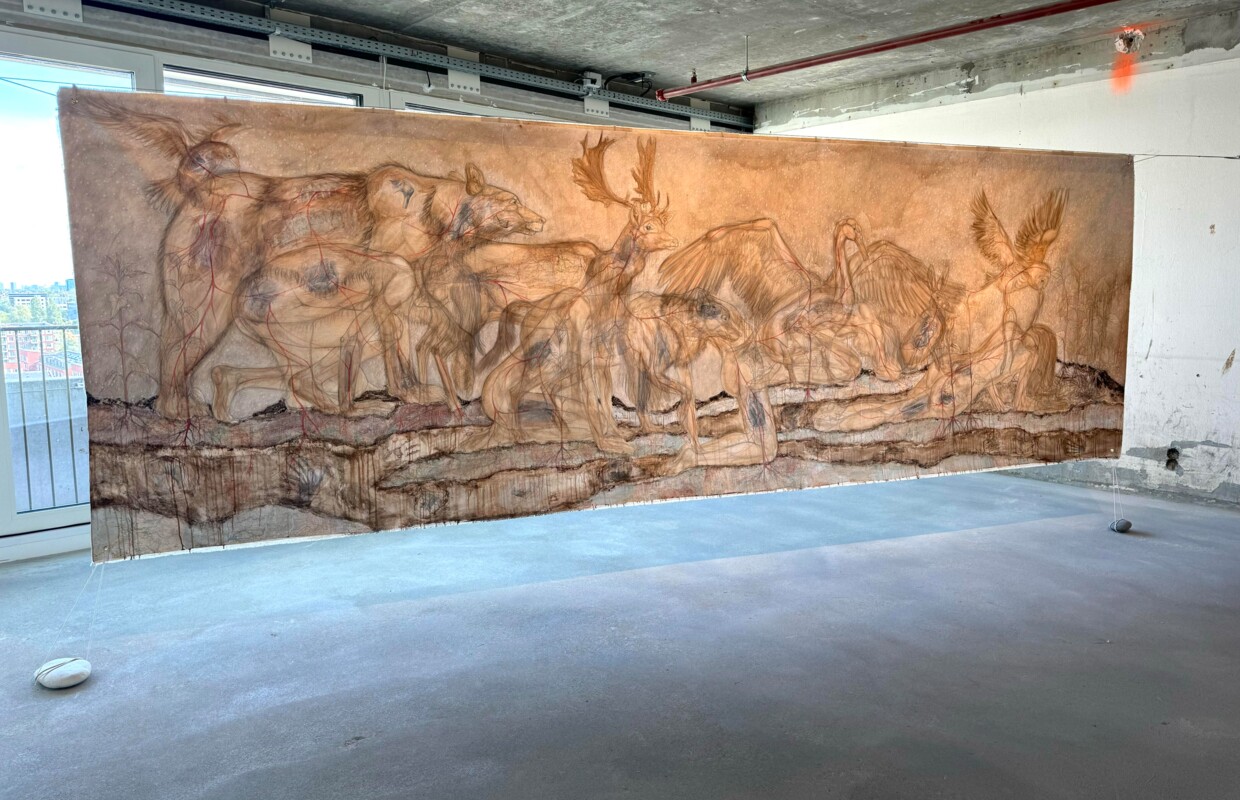

Freedom of experiment
One of the key characteristics of Big Art is the absence of a fixed format or theme – all artists are free to explore any idea using the materials of their choice. This creative freedom, combined with the possibilities of a large format, results in a succession of extraordinary and bold artistic experiments, where every visitor is sure to find something that resonates with them.
For me, such a work is a 9-metre wave constructed by Phlox van Oppen. This colourful installation, stretching across the room, is hand-woven from hundreds of admission wristbands left over from Dutch Design Week 2022. Phlox has always been fascinated with leftover materials and constantly searches for ways to incorporate them into her work. In recent years, she has used old clothes, curtains and tablecloths, used plastic bags and lint from tumble dryers. The core of her art is inspired by everyday materials that are often overlooked. She got the idea for the piece she’s currently presenting after attending Dutch Design Week:
It occurred to me that they must have all bracelets they’ve used for the event sitting somewhere in the warehouse – because of the year printed on them, it’s impossible to use them again. So I asked if I could come pick them up.
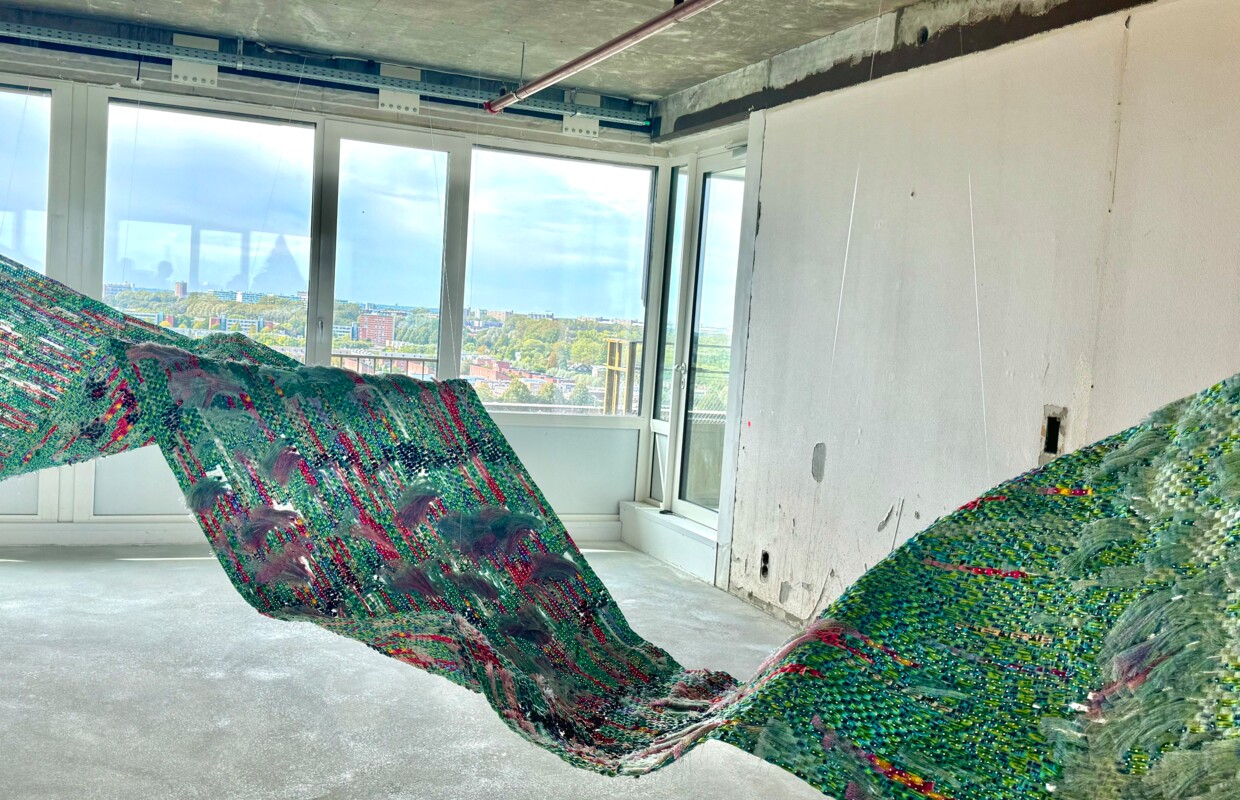

After gaining the materials, the most challenging part of the work began: using chicken wire from her parents’ garden as a base, Phlox started assembling the wave by braiding and unravelling the wristbands by hand. It took her a lot of time and effort to create the huge installation that’s on display today. The wave was originally supposed to be four metres shorter, but Phlox ended up braiding in many more wristbands. Turning surplus materials into art is an impactful way of encouraging people to rethink their value, while also reminding the public of the challenges our world currently faces and how waste production contributes to them. The hundreds of intertwined wristbands make you consider how much waste is usually left after big events.
An afterthought
Events like Big Art are much more than traditional exhibitions or art fairs – they provide a unique opportunity for artists to experiment with both form and content in front of a wide audience, while also giving viewers a chance to discover new concepts that resonate with them. Despite the vast size of the venue, throughout the three days the exhibition was on display, there wasn’t a single moment when the crowd thinned out. Getting that many people engaged in contemporary artworks is an impressive achievement and a testament to the fair’s success.
Share the post:

